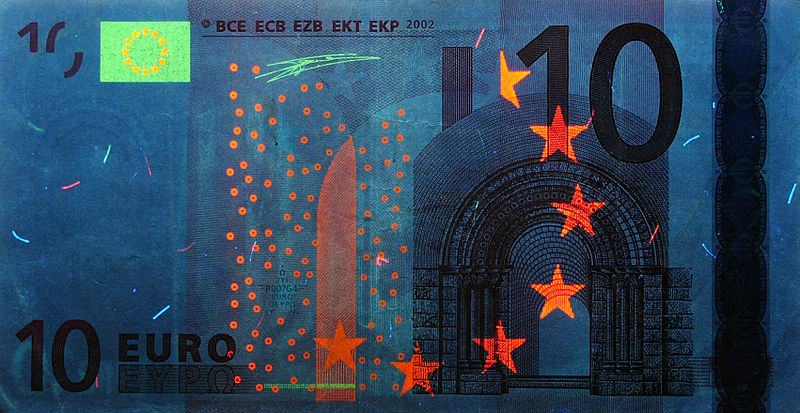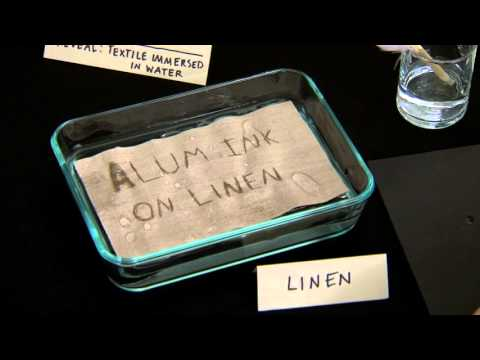
History of Security Inks Usage
The history of security inks is far more ancient than one might imagine, with the first mention of an invisible ink being used as a secret means of war time coming from the Greek writer Aeneas Tactcus in the 4th century BC. Philo of Byzantium, another Greek writer from antiquity, described an invisible ink comprising a reagent as far back as the 4th century BC. The Arabs started using lemons as organic inks in the 7th century AD as did the Europeans in the 16th century.

Science Behind Security Ink
Invisible Ink Demystified
What goes into creating security inks?
- Invisible
- Biometric
- Thermochromic
- Fluorescent
- Magnetic
- Optically variable
- Infrared
- Reactive
- Erasable
Security Ink Technologies
Biometric Taggants
Erasable Ink
Coin Reactive Ink
Bleeding Ink
UV Invisible Fluorescent Ink

Thermochromic Ink

Fugitive Ink
Chemical Reactive Inks
Optically Variable Ink
Magnetic Ink
Penetrating or Indelible Ink
Pen Reactive Ink
Secondary Fluorescing Ink
Photochromic Ink

Visible Infrared Ink
Metameric Inks
Adhesion Promotion Varnish
Security Ink Applications
Bank Notes


Textiles
Packaging
Official Documents

Labels
Pharmaceuticals
Wines and Spirits
Handbags and Cosmetics
Concert, Sports and Lottery Tickets
Matrix-Mark™ Taggants: Enabling Next-Generation Security Inks

Transforming Ordinary Inks to Next-Gen Security Inks
Versatile Delivery Options
- Offset / lithographic ink
- Flexographic ink
- Silk screen ink
- Rotogravure ink
- Intaglio ink
- Inkjet ink
- Laser Toner
- Thermal transfer ribbon
- Plastic pellets for injection molding
- Clear coating
These taggants have the following properties:
- For all printing technologies: Offset, rotogravure, flexo, screen, intaglio, inkjet, laser, TTP, etc.
- Inorganic: No performance impact by age or exposure to strong UV radiation
- Tough: Sustained pressure even in intaglio printing process
- Chemical resistant: Withstood chemical resistant tests even for banknote use
- Temperature resistant: Melting point above 1000°C
- Small size: 500 nm to 5 micrometer (depending on application)– difficult to detect
- Complex formulation: Virtually impossible to re-engineer
- Involves proprietary well researched methods of forensic detection: Every taggant comes with a unique forensic feature that enables the trace element to be used as evidence in the court of law.
Matrix-Mark™ Taggant Security Features

Sophisticated covert feature (Level 3)
Detection principle: Invisible light from emitting device will be converted into another invisible light wavelength. The unique particle characteristics can only be detected with proprietary detection systems. Multiple taggant versions are available.
This is an advanced anti-counterfeit feature as it cannot be detected with ‘simple’ verification tools, e.g. UV light or IR laser pen.

Forensic security feature (Level 4)
During production of the MatriX-Mark™ taggants a unique forensic feature can be added. A nearly infinitive number forensic signatures can be added to provide irrefutable proof of authenticity in court of law, beyond any reasonable doubt.
For detecting MatriX-Mark™ Taggants, handheld devices or in-field single- or multi-taggant detectors and similar inspection systems need to be used.
These specialized detectors and scanners carry out complex analyses before confirming the presence of a taggant version by giving a binary response. Different high-speed and fully automatic detection devices for locating the presence of security taggants in documents or products can also be used.

Enhance Product Authenticity and Traceability with MatriX-Mark™ Taggants
The inks with MatriX-Mark™ Taggants have already been successfully used in rotogravure, screen printing, flexo, intaglio, offset, and other printing methods. The high usability of these security taggant versions cements the fact that they can be seamlessly integrated into different products and production processes.
Strengthen product authenticity and traceability with next-generation security inks that are empowered by MatriX-Mark™ taggant technology.
